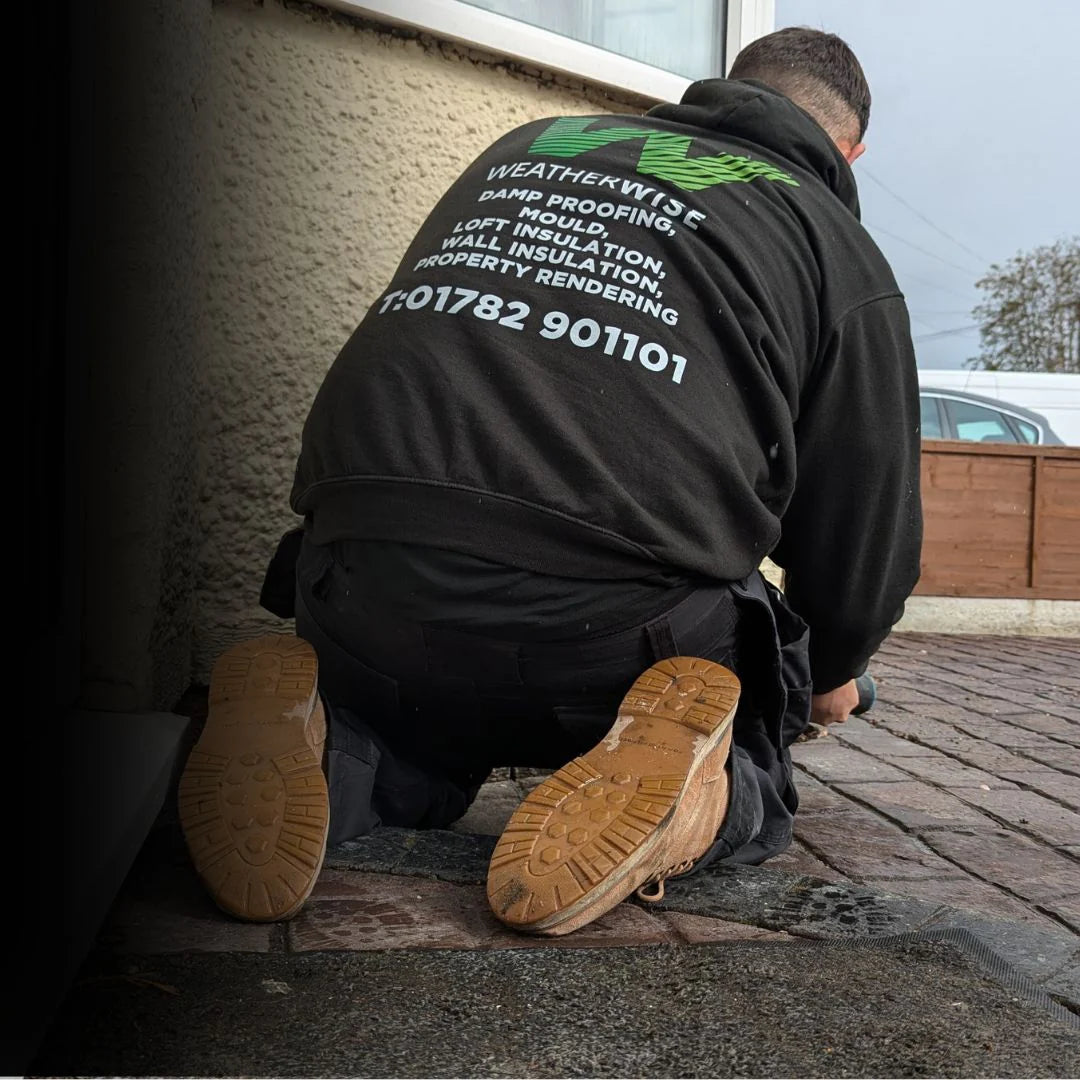🧱 What Is Bridging Plaster?
Bridging plaster is one of the most common causes of damp returning after a damp proof course (DPC) has been installed. It occurs when internal plaster or render extends below the level of the new DPC, allowing moisture from the ground to bypass the protection and re-enter the wall above.
Even with a perfectly installed DPC, bridging plaster can allow moisture to rise up the internal surface—undoing the work you’ve just had done.
🚩 How to Spot Bridging Plaster in Your Home
✅ Damp patches or staining near the skirting board
✅ Persistent mould or musty odours at low wall levels
✅ Walls that don’t dry out after DPC installation
✅ Plaster that touches or overlaps with the floor screed
✅ White salt deposits on the wall surface
If you’re still seeing signs of damp weeks or months after a DPC treatment, bridging is often the reason.
🛠️ Why Removing Bridging Plaster Is Essential
At Weather Wise Solutions, we inspect every treated wall for potential bridging issues. If the plaster hasn’t been removed properly:
✔️ Moisture can still rise into the wall finish
✔️ Salt contamination can cause blistering and flaking
✔️ Damp may appear to return—causing confusion and concern
That’s why we only recommend plastering when bridging or salt contamination is confirmed, and we use specialist, breathable systems from PAM Ties when reapplying.
💡 A Proper DPC Needs Proper Finishing
A damp proof course does the heavy lifting—but if internal finishes don’t support it, you’ll end up with recurring problems. Removing old, damp-contaminated plaster and installing a breathable, salt-resistant render is key to long-term success.
📞 Book a Free Wall Inspection Today
Not sure if your wall has bridging plaster? We’ll inspect it and give honest advice—no unnecessary upsells, just what your home actually needs.
Book a Free Survey for your Home here with Weather Wise Solutions – experts in moisture control and wall protection.



